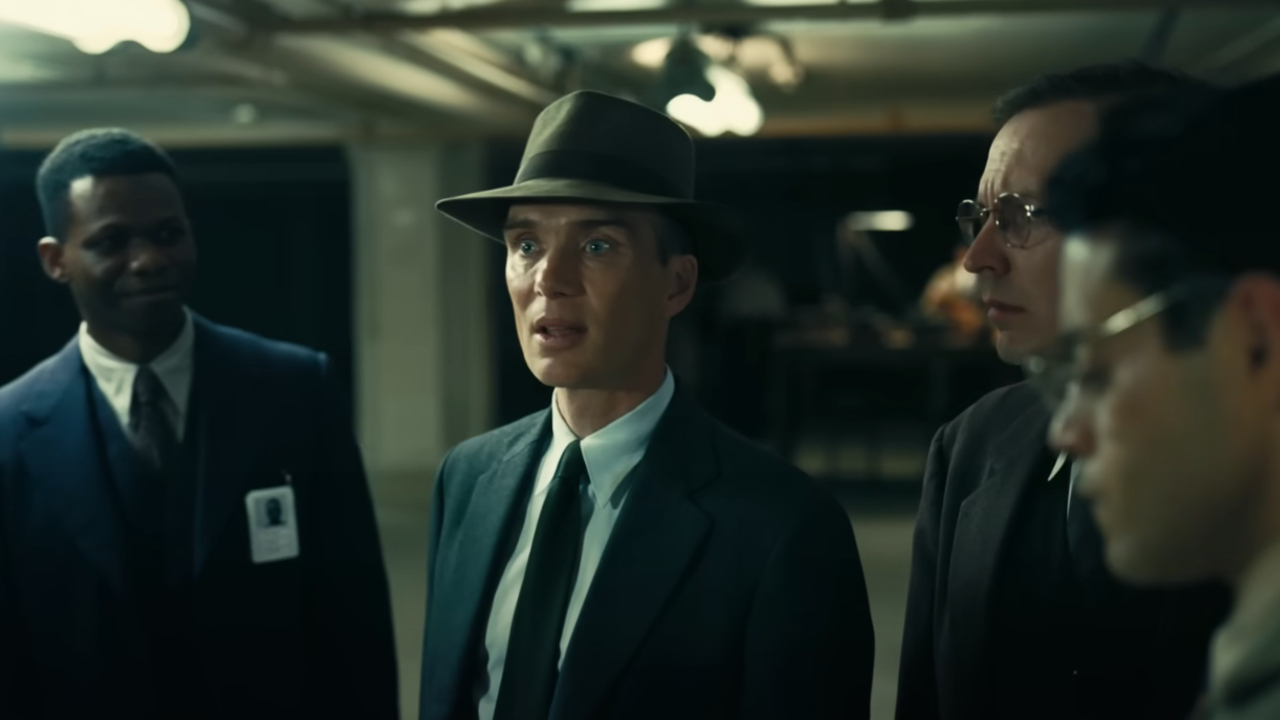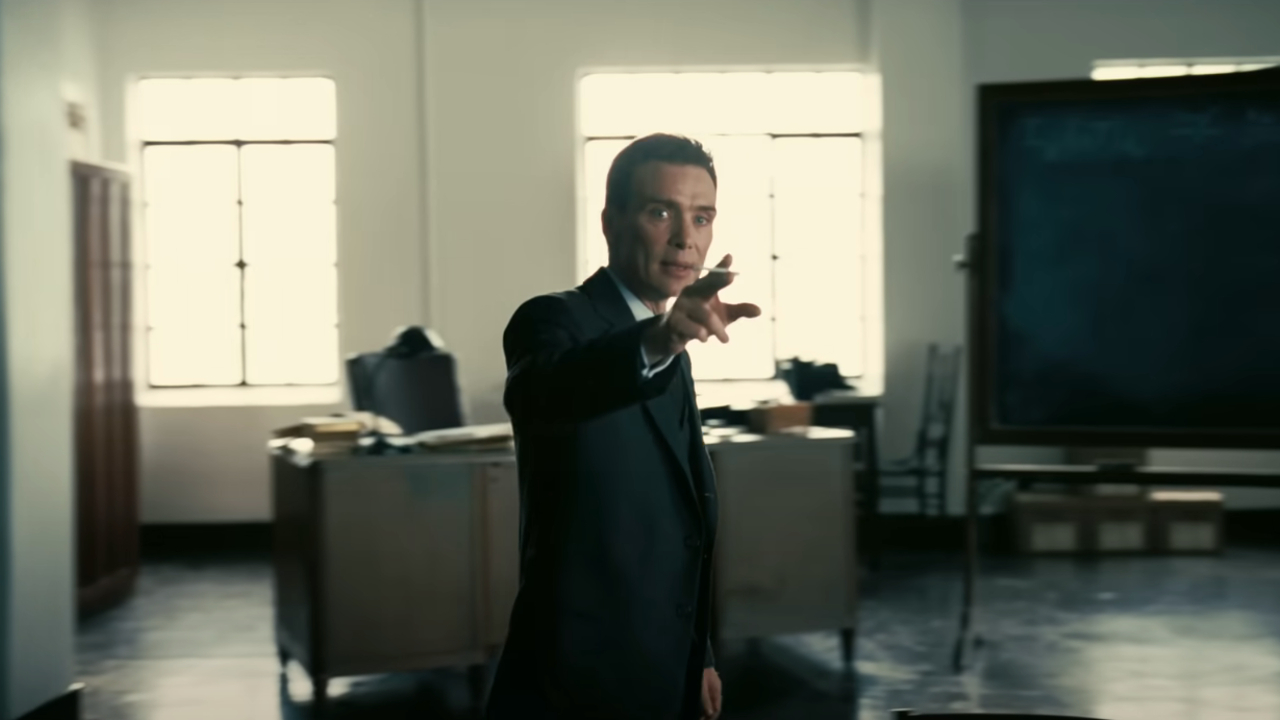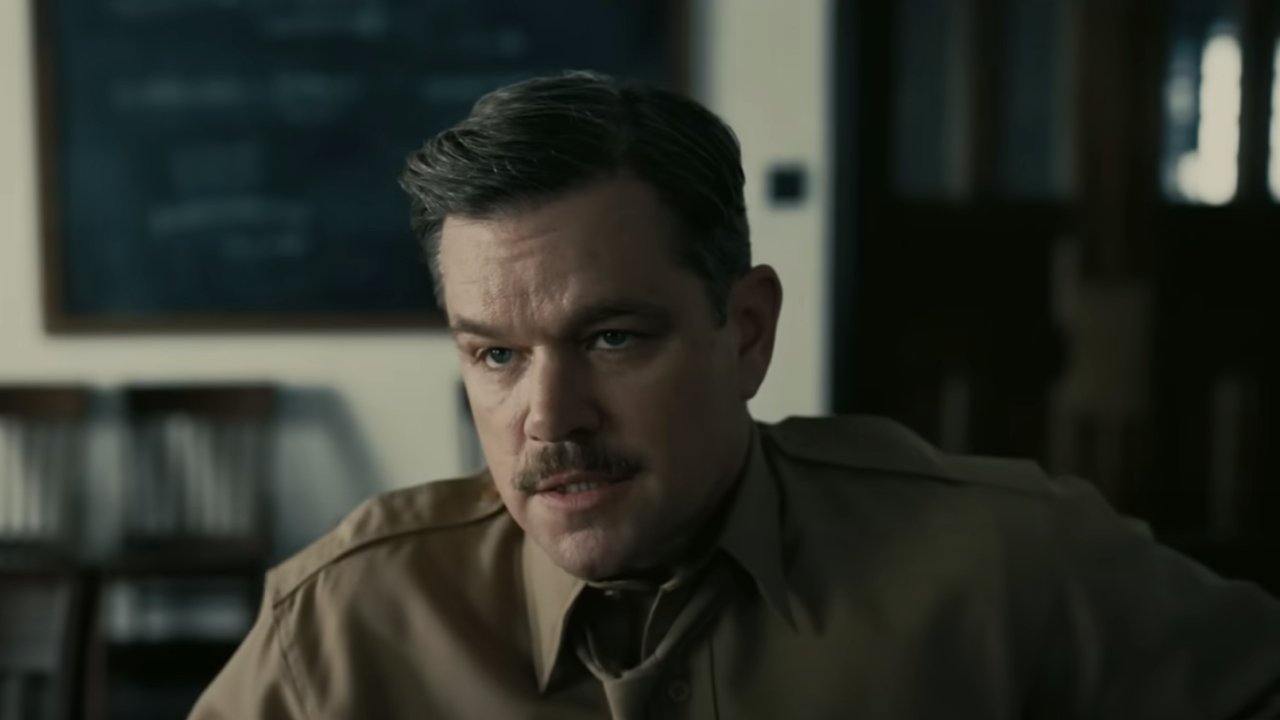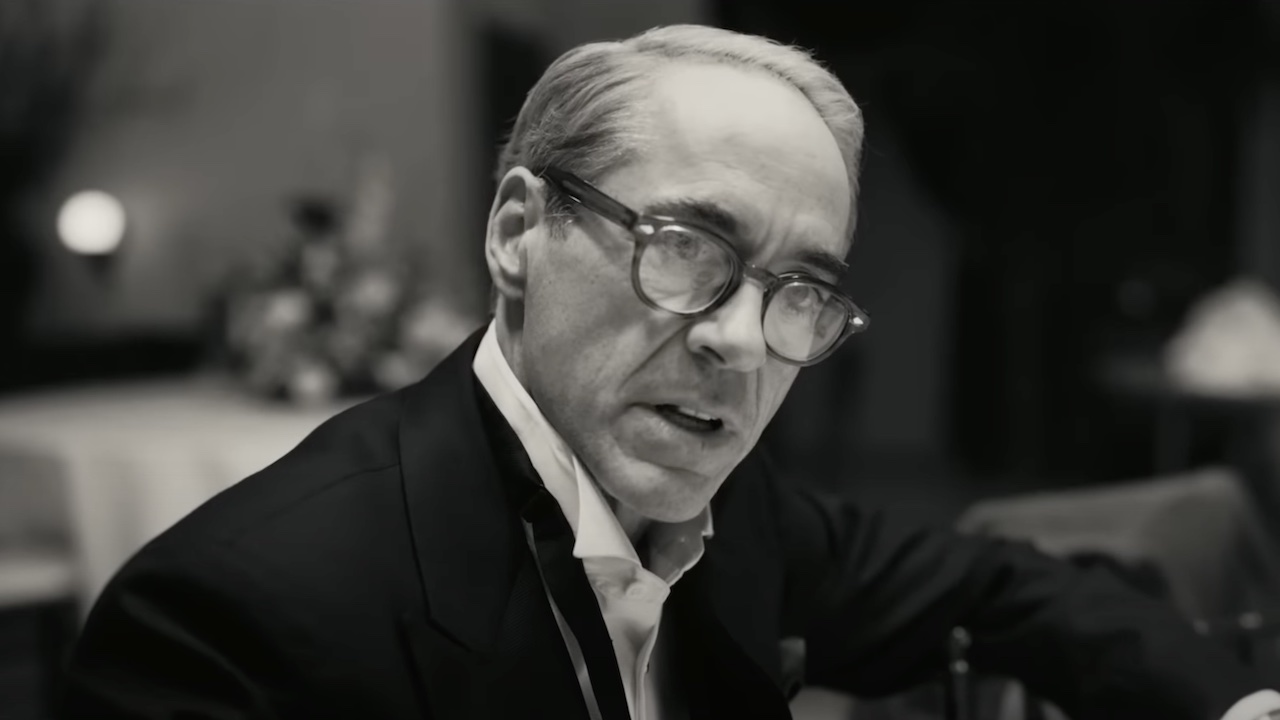Oppenheimer's Timeline Explained: The Movie's Major Events In Chronological Order
Here's the true order of events from Christopher Nolan's historical epic.

- The Early Years Of Nuclear Physics (1932 - 1942)
- Cockroft And Walton Split The Atom
- Oppenheimer and Jean Tatlock meet
- Oppenheimer and Katherine Harrison meet / Einstein's Letter to President Roosevelt
- Hitler invades Poland
- Oppenheimer and Katherine Harrison marry
- Oppenheimer discusses fears of “Atmospheric Ignition” with Einstein
- The Manhattan Project (1942 - 1943)
- General Leslie Groves recruits J. Robert Oppenheimer for The Manhattan Project
- Los Alamos Laboratory is scouted and constructed
- The Chevalier affair
- Oppenheimer secretly meets Jean Tatlock in San Francisco
- The Trinity Test, And Its Consequences (1945 - 1949)
- The Trinity Test / The Potsdam Conference
- President Truman drops atomic bombs on Hiroshima and Nagasaki
- Lewis Strauss recruits J. Robert Oppenheimer / Oppenheimer shares his regrets with Einstein
- J. Robert Oppenheimer humiliates Lewis Strauss through testimony
- J. Robert Oppenheimer’s Fall And Rise To Grace (1953 - 1963)
- The Soviet Union tests its own fusion based bomb
- The investigation into Oppenheimer’s supposed communist ties begins
- Oppenheimer’s Q Clearance is suspended
- J. Robert Oppenheimer’s hearing proceeds, resulting in his Q Clearance being revoked
- Lewis Strauss is nominated Secretary of Commerce, but fails to secure the post
- J. Robert Oppenheimer receives the Enrico Fermi Award from President Johnson
Warning: spoilers for Oppenheimer are in play. If you haven’t seen Christopher Nolan’s historical epic yet, you’ve been warned.
When approaching a historical narrative like Christopher Nolan’s epic film Oppenheimer, there’s always a discussion of where the line rests between real events and dramatic invention. In terms of the Cillian Murphy-led ensemble biopic, those inventions mostly come from cutting between two different timelines of events, the end result being a non-linear movie that’s pure Nolan.
It’s because of that narratively thrilling device that we’ve decided to put together this timeline of the major events from Oppenheimer, in the chronological order in which they occurred. One fair warning before we begin, we're focusing on the events as they're depicted in the movie -- if you’d like to dig into the stories behind these events even more, there will be reference links provided throughout.
Not to mention, American Prometheus: The Triumph and Tragedy of J. Robert Oppenheimer by Kai Bird and Martin J. Sherwin is also an indispensable volume, as it was the text used as inspiration for this film. With that in mind, let’s begin this brief rundown of key events leading to the Oppenheimer ending, starting with the scientific discovery that made it all possible.
J. Robert Oppenheimer And The Early Years Of Nuclear Physics (1932 - 1942)

April 14, 1932: John Cockcroft and Ernest Walton Split The Atom
The discovery that heralded the age of nuclear physics, Cockcroft and Walton’s discovery confirmed the equation of E=mc2, “the equivalence of mass and energy” formulated by Albert Einstein (Tom Conti). Noted by the American Physics Society as “the underlying principle behind thermonuclear weapons and nuclear energy,” it’s the breakthrough that leads J. Robert Oppenheimer (Cillian Murphy) to start pushing his study of quantum physics in the direction of creating the first atomic bomb.
Spring 1936: J. Robert Oppenheimer And Jean Tatlock’s First Meeting
While at a party hosted by Oppenheimer’s landlady, the professor met the person who some considered to be his true love, graduate student Jean Tatlock (Florence Pugh). The two would carry on a tumultuous relationship, which would continue throughout his future marriage.
August 1939: Oppenheimer Meets His Future Wife Katherine Harrison / “Einstein’s Letter To President Roosevelt”
A bit of a social butterfly at this point in his life, J. Robert Oppenheimer would eventually meet his future wife, Katherine “Kitty” Harrison (Emily Blunt). Married to her second husband at the time, the two would carry on their own affair that led to their eventual marriage.
Your Daily Blend of Entertainment News
Meanwhile, another key moment in atomic politics transpired around this same timeframe, as Albert Einstein and other physicists signed a letter to President Franklin D. Roosevelt. The purpose of “Einstein’s Letter to President Roosevelt” was to urge the United States to work with theoretical physicists to beat Nazi Germany to developing an atomic weapon. While he would later regret this letter, it wasn’t too long before its intent was taken very seriously.
September 1, 1939: Adolf Hitler Invades Poland
As we saw in Oppenheimer, just as our protagonist co-published a paper that would eventually lead to the study and discovery of black holes, world history took a turn for the worse. The same day ”On Continued Gravitational Contraction” was published, Adolf Hitler invaded Poland, officially starting World War II.
November 2, 1940: J. Robert Oppenheimer And Katherine Harrison Are Married
After a courtship lasting several years, Katherine Harrison and J. Robert Oppenheimer were finally married in November of 1940. Finding out she was with child, she and then husband Richard agreed to divorce, so that she and Robert could marry.
July 1942: Oppenheimer Discusses Fears Of “Atmospheric Ignition” With Albert Einstein
Here’s a pretty big departure between history and fiction, and one that's also covered in our feature on questions you might have after watching Oppenheimer. In the film J. Robert Oppenheimer goes to Albert Einstein for advice on the potential of "atmospheric ignition," while weighing the chances that this theoretical new weapon could incinerate the world once used.
In reality, Oppenheimer took those concerns to Arthur Compton. As recalled in an entry from Michigan History Magazine (via The Free Library), the man in charge of the Chicago contingent that oversaw the first nuclear reactor was the one to have that fateful talk to knock the chances of such a catastrophe to “near zero.”
As to why Christopher Nolan made this choice in Oppenheimer, the director revealed to The New York Times that Einstein was simply the more recognizable figure in the narrative. Story tweaks aside, this was when J. Robert Oppenheimer's involvement with The Manhattan Project started to become more pronounced.
Los Alamos, And The Manhattan Project (1942 - 1943)

September 1942: General Leslie Groves Recruits J. Robert Oppenheimer For The Manhattan Project
While it was in development for some time before his recruitment, J. Robert Oppenheimer was finally brought onto The Manhattan Project. Officially tapped by General Leslie Groves (Matt Damon), reservations about Oppenheimer’s politics and lack of Nobel Prize were overcome. From this point on, Robert would be a part of the secretive project that seemed to be excluding him to this very moment.
October 1942 - November 1943: Los Alamos Laboratory Is Scouted And Constructed
Through the span of a little over a year, the Los Alamos Laboratory went from being scouted to completing the construction of its first form. It’s heavily truncated in Oppenheimer, but more details can be found on Wikipedia.
Winter 1942 - 1943: The Chevalier Affair
Two pivotal moments were about to take place that would become major sticking points in the future of J. Robert Oppenheimer. The first was a discussion with Haakon Chevalier (Jefferson Hall), a colleague of Robert’s back in his days as a Berkeley professor.
Haakon suggested he knew someone who could pass secrets from The Manhattan Project to the Soviet Union, should they be so inclined; as we saw in that late night kitchen scene. Robert would eventually report this suspicion, which led to further interrogation by Colonel Boris Pash (Casey Affleck).
June 14, 1943: Oppenheimer Secretly Meets Jean Tatlock In San Francisco
The other moment that would come back to haunt J. Robert Oppenheimer during his future hearing occurred in the summer of 1943. With his continued affair with Jean Tatlock still in play, Oppenheimer visited her in San Francisco. This was witnessed by federal agents tailing him, and eventually came to the attention of his future foe: Lewis Strauss (Robert Downey Jr.)
The Trinity Test, And Its Consequences (1945 - 1949)

July 16-26, 1945: The Trinity Test/The Potsdam Conference
While Germany had already surrendered by this point, Oppenheimer shows that The Manhattan Project was still very much of interest to President Harry S. Truman. Pressure was exerted by General Leslie Groves to have a successful test before the president’s attendance at The Potsdam Conference.
On July 16th, 1945 the Trinity Test was successfully conducted, just before the conference's start. Truman was informed of this success, and mentioned it to then ally and Soviet Union leader Josef Stalin. Before the conference's conclusion on July 26th, President Truman offered Japan an ultimatum: surrender, or face "prompt and utter destruction."
August 6 - 9, 1945: President Truman Drops Atomic Bombs On Hiroshima And Nagasaki
In a move meant to end World War II, and save countless lives in the process, President Harry S. Truman ordered atomic bombs be dropped on Hiroshima and Nagasaki. Carried out respectively on August 6th and August 9th, J. Robert Oppenheimer would eventually learn of these events through a speech Truman delivered on the radio.
Late 1946 - January 1947: Lewis Strauss Recruits J. Robert Oppenheimer / Oppenheimer Shares His Regrets With Albert Einstein
In the years after his work on the Manhattan Project, J. Robert Oppenheimer was the most trusted voice in nuclear policy. Some didn’t agree with that sort of power, and Lewis Strauss was one of them. At this point in time, Strauss was trying to ally Oppenheimer by offering him the post as director of the Institute for Advanced Study at Princeton University.
Were the film’s events to be completely factually true, this is where Robert and Albert Einstein would have had their talk that is shown in Oppenheimer’s ending. But as far as we can tell, that moment was also a fabrication, as the calculations that spurred it on in the film were never discussed between the two.
June 1949: J. Robert Oppenheimer Humiliates Lewis Strauss Through Testimony
The final act that split Lewis Strauss and J. Robert Oppenheimer from allies to enemies would be the moment where Oppenheimer humiliated Strauss with his testimony involving the matter of exporting isotopes to other countries. As it's revealed, it would begin the grudge that saw Strauss pulling a lot of strings to discredit his opponent, driving the “Fusion” storyline from Oppenheimer’s black and white scenes; and kick off a bout of Cold War paranoia with serious consequences.
J. Robert Oppenheimer’s Fall And Rise To Grace (1953 - 1963)

August 1953: The Soviet Union Tests Its Own Fusion Based Bomb
The Soviet Union, already secretly possessing knowledge of The Manhattan Project from a spy on the inside, detonates a fusion-based bomb designated “Joe 4.” As we learn later in the movie, it was German physicist Klaus Fuchs (Christopher Denham) who passed along the information. But by this point, the stage was set to try and pin those acts on J. Robert Oppenheimer.
November 7, 1953: The Investigation Into Oppenheimer’s Supposed Communist Ties Begins
Thanks to a letter from William L. Borden (David Dastmalchian), the executive director of the United States Congress Joint Committee on Atomic Energy, suspicions were aroused that J. Robert Oppenheimer was “more probably than not…an agent for the Soviet Union."
December 21, 1953: Oppenheimer’s Q Clearance Is Suspended
Thanks to the newly leveled suspicions against him, J. Robert Oppenheimer’s Q Clearance is suspended. It’s at this point that Lewis Strauss gives him two choices: resign, or request a hearing; knowing full well that Oppenheimer will choose the latter.
April-May 1954: J. Robert Oppenheimer’s Hearing Proceeds, Resulting In His Q Clearance Being Revoked
Several months after choosing to go through a hearing to maintain his security clearance, J. Robert Oppenheimer, as well as several associates from The Manhattan Project, are grilled in a month of closed door sessions. In addition to “The Chevalier Affair” and his affair with Jean Tatlock being read into record, Edward Teller provides some truly damning testimony against his former boss. Oppenheimer would be denied the reinstatement of his Q clearance as a result of this hearing.
October 1958 - June 1959: Lewis Strauss Is Nominated Secretary Of Commerce, But Fails To Secure The Post
After his supposed defeat of Oppenheimer’s protagonist, Lewis Strauss would be nominated Secetary of Commerce by President Dwight D. Eisenhower. However, that appointment was pressed into a full confirmation hearing. This is where we see fellow scientist David L. Hill (Rami Malek) testify that Strauss’ vendetta against Oppenheimer made him unfit for duty. As a result, Lewis would become the eighth person that failed to secure a cabinet appointment, with the final vote ending in a 46–49 result.
December 2, 1963: J. Robert Oppenheimer Receives The Enrico Fermi Award From President Johnson
Just a few short years before his death, and as Oppenheimer’s cinematic version of Albert Einstein predicted, we see J. Robert Oppenheimer eventually being celebrated by the government that considered him a pariah. Presented by President Lyndon B. Johnson, the Enrico Fermi Award was given to Oppenheimer, where several parties who turned against him were present.
Just as the film had depicted Kitty Oppenheimer refused to shake hands with Edward Teller, on the grounds that he had betrayed Robert during his prolonged battle with Lewis Strauss.
On February 18, 1967, J. Robert Oppenheimer would succumb to throat cancer, after being in a coma for three days.
As you can see, that's a lot of history to cover in one movie. But such is the nature I highlighted in my Oppenheimer review. A film truly grand in size and scope, it's now playing in a theater near you, and well worth the time to seek it out in its proper IMAX 70mm format.

Mike Reyes is the Senior Movie Contributor at CinemaBlend, though that title’s more of a guideline really. Passionate about entertainment since grade school, the movies have always held a special place in his life, which explains his current occupation. Mike graduated from Drew University with a Bachelor’s Degree in Political Science, but swore off of running for public office a long time ago. Mike's expertise ranges from James Bond to everything Alita, making for a brilliantly eclectic resume. He fights for the user.
